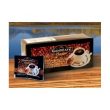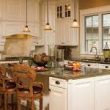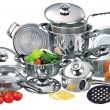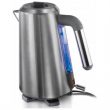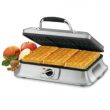Some people thought the fascination with cupcakes would wan after a while but this hasn’t proven to be the case. Cupcakes, also known as fairy cakes, were originally small cakes designed for one person that features a host of different icing, flavours and decorations. The cupcake industry has blossomed in such a way that there are now entire range dedicated to the creation and decoration of these little cakes. The other development in the trend is giant cupcakes and with it the giant cupcake pan.
Why go giant?
Even the most dedicate cupcake fan would struggle to get through one of the largest of the cupcake creations but that is because they are designed for more than one person. In fact, they make an excellent birthday or other party cake that can be cut into pieces and shared out. This means they are easier and quicker to make than a host of individual cakes and can take less time to decorate. It also means that the decoration can be larger scale because there is a larger area to work with – spelling out someone’s name, for example.
Giant cupcake pans
There are two main types of giant cupcake pans; cast aluminium and silicon. They are also known as giant cupcake moulds and usually come into two halves. The bottom half tends to have simple fluted edgings to resemble the pattern created by a bun case while the top half is shaped to create the basis to decorate on. This means putting the two halves together uses another filling such as cream or jam to act as an adhesive.
There are other moulds that can actually fold over, usually the silicon variety, and allow the cake to cook as a single piece rather than needing to combine the two halves. This creates a large cupcake that is much the same as the small, individual versions.
Basic cupcake recipe
The most basic cupcake recipe is a simple affair. To make one giant cupcake you need 12 oz. softened butter, 12 oz. caster sugar, 12 oz. sieved self-raising flour and six medium eggs, lightly beaten.
Pre-heat the oven to 160C or Gas Mark 3 and if you are using a metal mould, grease and flour all sides. Silicone moulds don’t need greasing. Cream the butter and the sugar together so they are fluffy and light then add the flour with the eggs, alternatively and a little at a time, mixing as you go. You can then separate the mixture across the two sides of the mould.
It will need to be baked in the oven for around 50-60 minutes or until an inserted skewer comes out clean. Leave it to cool in the tin then turn out onto a wire rack at which point it is ready to be decorated.
Traditional icing for the cupcake is a butter cream version with or without a colouring and flavouring. But with the range of products now available for the decoration department, the only limitation is your imagination.

